Kenwood TK-3200, TK-2200 User Manual
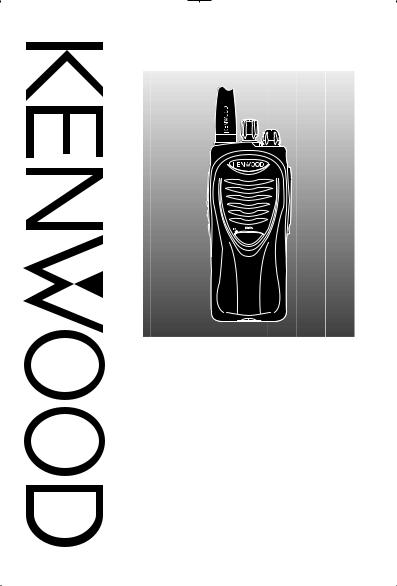
INSTRUCTION MANUAL
VHF FM TRANSCEIVER
TK-2200
UHF FM TRANSCEIVER
TK-3200
KENWOOD MASTER PROTALK
DISTRIBUTOR PROGRAM
e Commerce Supply Inc

 21092 Bake Parkway #100
21092 Bake Parkway #100
Lake Forest, CA 92630
© B62-1791-10 (K, K2)
09 0894907-30506 05-50724 03 0294901-480-0039 FAX www.KenwoodMPD.com
radios@KenwoodMPD.com

THANK YOU
We are grateful for your purchase of this KENWOOD product and welcome you to the Business Radio Service (BRS).
Your KENWOOD 2-way Business Radio is called a ìtransceiverî, meaning ìtransmitter & receiverî. We believe this easy-to-use transceiver will provide you with dependable and reliable communications. This KENWOOD transceiver is a precision device. Treat it with care, and you will enjoy years of reliable operation.
MODELS COVERED BY THIS MANUAL
TK-2200 (K): 2-channel VHF FM Transceiver TK-3200 (K): 2-channel UHF FM Transceiver TK-2200 (K2): 8-channel VHF FM Transceiver TK-3200 (K2): 8-channel UHF FM Transceiver
FEATURES
ï2 channels (K) or 8 channels (K2) with 27 VHF operating frequencies (TK-2200) or 56 UHF operating frequencies (TK-3200) and 122 tone/ code settings for each channel allowing you to ignore unwanted calls.
ïBuilt in voice scrambler gives you complete privacy for your conversations.
ïHands free operation when using an optional headset.
ïVoice announcement lets you know which channel you have selected and which settings you have made when reassigning key functions and channel settings.

OPERATING CONDITIONS
Open locations |
Up to 6 miles |
(no obstructions) |
(approximately 9.6 km) |
|
|
Residential areas |
Up to 1.5 miles |
(near buildings) |
(approximately 2.4 km) |
|
|
In steel/ concrete reinforced |
Up to 250,000 square feet |
buildings |
(approximately 23,220 m2) |
In high rises |
Up to 20 floors |
|
|
|
|
Note: The listed ranges are based on field testing and may vary with your operating conditions and individual transceiver.
i

FCC LICENSE INFORMATION
Your KENWOOD transceiver operates on communications frequencies which are subject to FCC (Federal Communications Commission) Rules & Regulations. FCC Rules require that all operators using Private Land Mobile radio frequencies obtain a radio license before operating their equipment. Application for license must be made on FCC form 601, schedules D and H, and Remittance form 159
FAX: Forms can be obtained by fax from the FCC Fax-On- Demand system. Call 1-202-418-0177 from your fax machine and request document number 000601 for the form, schedules, and instructions.
MAIL: Forms can be ordered by telephone, and will be sent to you by first class mail. Call the FCC Forms Hotline at 1-800-418-FORM (1-800-418-3676).
INTERNET: Form 601 and instructions can be downloaded from the FCC Forms website at http://www.fcc.gov/formpage.html
Before filling out your Form 601 application Technical Data section, you must decide on which frequencies you will operate. See the frequency charts on pages 19 and 20.
QUESTIONS? Call the FCC for license application questions at 1-888-CALL-FCC (1-888-225-5322).
CHANNEL SPACING
The TK-2200/ TK-3200 uses 12.5 kHz channel spacing as per the FCC regulations. Transceivers using 12.5 kHz channel spacing may not have optimal sound quality when used with transceivers using 25 kHz channel spacing.
ii

PRECAUTIONS
ïRefer service to qualified technicians only. Do not modify or attempt to adjust this transceiver for any reason.
ïDo not expose the transceiver to long periods of direct sunlight, nor place it close to heating appliances.
ïDo not place the transceiver in excessively dusty, humid, or wet areas, nor on unstable surfaces.
ïAvoid extreme exposure to heat and cold. This transceiver can be used in mild weather conditions and is not waterproof.
ïDo not operate your transceiver or charge your battery pack in an explosive atmosphere (gases, dust, fumes, etc.).
ïIf an abnormal odor or smoke is detected coming from the transceiver, immediately switch OFF the power and remove the battery pack from the transceiver. Contact your KENWOOD dealer.
NOTICES TO THE USER
Government law prohibits the operation of unlicensed radio transmitters within the territories under government control.
Illegal operation is punishable by fine and/or imprisonment.
Refer service to qualified technicians only.
Safety: It is important that the operator is aware of, and understands, hazards common to the operation of any transceiver.
EXPLOSIVE ATMOSPHERES (GASES, DUST, FUMES, etc.)
Turn off your transceiver while taking on fuel, or while parked in gasoline service stations.
iii
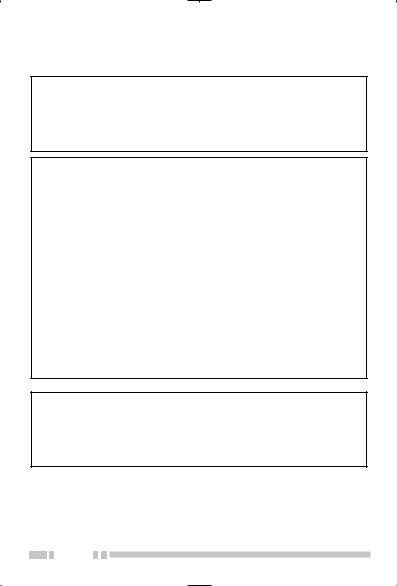
One or more of the following statements may be applicable:
FCC WARNING
This equipment generates or uses radio frequency energy. Changes or modifications to this equipment may cause harmful interference unless the modifications are expressly approved in the instruction manual. The user could lose the authority to operate this equipment if an unauthorized change or modification is made.
INFORMATION TO THE DIGITAL DEVICE USER REQUIRED BY THE FCC
This equipment has been tested and found to comply with the limits for a Class B digital device, pursuant to Part 15 of the FCC Rules. These limits are designed to provide reasonable protection against harmful interference in a residential installation.
This equipment generates, uses and can generate radio frequency energy and, if not installed and used in accordance with the instructions, may cause harmful interference to radio communications. However, there is no guarantee that the interference will not occur in a particular installation. If this equipment does cause harmful interference to radio or television reception, which can be determined by turning the equipment off and on, the user is encouraged to try to correct the interference by one or more of the following measures:
•Reorient or relocate the receiving antenna.
•Increase the separation between the equipment and receiver.
•Connect the equipment to an outlet on a circuit different from that to which the receiver is connected.
•Consult the dealer for technical assistance.
FCC REGULATIONS REGARDING THE USE OF THE EMERGENCY CHANNEL
The communications must be for the purpose of soliciting or rendering assistance to a traveler, or for communicating in an emergency pertaining to the immediate safety of life or the immediate protection of property.
iv
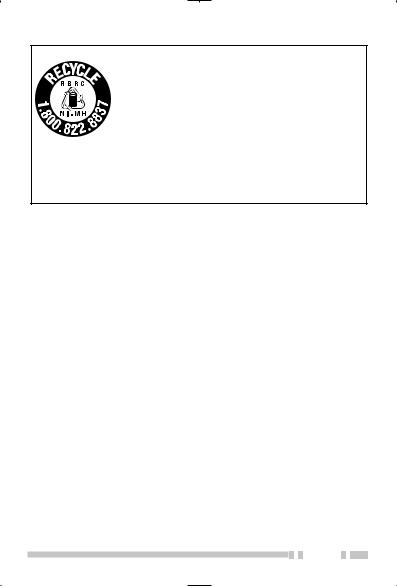
ATTENTION (U.S.A. Only):
The RBRC Recycle seal found on KENWOOD nickel metal hydride (Ni-MH) battery packs indicates
KENWOODís voluntary participation in an industry program to collect and recycle Ni-MH batteries after
their operating life has expired. The RBRC program is an alternative to disposing Ni-MH batteries with
your regular refuse or in municipal waste streams, which is illegal in some areas.
For information on Ni-MH battery recycling in your area, call (toll free) 1-800-8-BATTERY (1-800-822-8837).
KENWOODís involvement in this program is part of our commitment to preserve our environment and conserve our natural resources.
v

CONTENTS |
|
UNPACKING AND CHECKING EQUIPMENT ................................... |
1 |
SUPPLIED ACCESSORIES ......................................................... |
1 |
ORIENTATION .................................................................... |
3 |
PREPARATION ................................................................... |
4 |
CHARGING THE Ni-MH BATTERY PACK .......................................... |
4 |
INSTALLING/ REMOVING THE BATTERY PACK ...................................... |
6 |
INSTALLING THE OPTIONAL ANTENNA ............................................. |
7 |
INSTALLING THE BELT CLIP ...................................................... |
7 |
INSTALLING THE COVER OVER THE SPEAKER/ MICROPHONE JACKS .................. |
8 |
INSTALLING THE OPTIONAL SPEAKER/ MICROPHONE (OR HEADSET) ................. |
8 |
GETTING STARTED .............................................................. |
9 |
VOICE OPERATED TRANSMISSION (VOX) .................................. |
10 |
VOX GAIN ................................................................... |
10 |
VOX OPERATION .............................................................. |
12 |
KEY FUNCTIONS ............................................................... |
13 |
LOCK KEY .................................................................... |
13 |
SCAN KEY .................................................................... |
13 |
BACKGROUND OPERATIONS ................................................. |
15 |
TIME-OUT TIMER (TOT) ....................................................... |
15 |
LOW BATTERY WARNING ....................................................... |
15 |
QUIET TALK (QT)/ DIGITAL QUIET TALK (DQT) ................................ |
16 |
CHANNEL SETUP MODE ....................................................... |
17 |
CHANNEL OPERATING FREQUENCIES ............................................. |
18 |
QUIET TALK (QT)/ DIGITAL QUIET TALK (DQT) SETTINGS ....................... |
21 |
KEY ASSIGNMENT MODE ..................................................... |
25 |
CALLING ALERT ............................................................... |
28 |
KEY LOCK .................................................................... |
28 |
SUPER LOCK .................................................................. |
28 |
MONITOR/ SQUELCH OFF ...................................................... |
29 |
SCAN ......................................................................... |
29 |
SCRAMBLER ................................................................... |
30 |
ALL RESET MODE .............................................................. |
31 |
OPTIONAL ACCESSORIES ..................................................... |
32 |
TROUBLESHOOTING GUIDE .................................................. |
33 |
vi
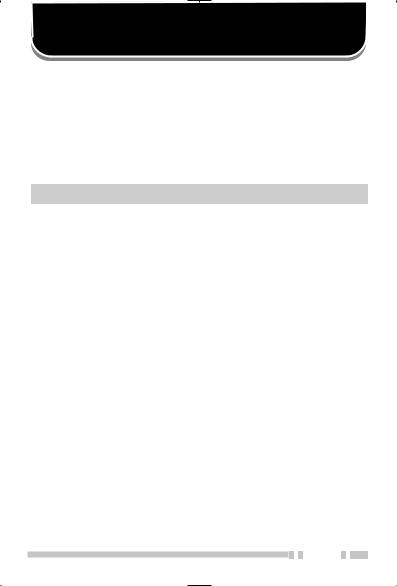
UNPACKING AND CHECKING EQUIPMENT
Carefully unpack the transceiver. We recommend you identify the items listed in the following table before discarding the packing material. If any items are missing or have been damaged during shipment, file a claim with the carrier immediately.
SUPPLIED ACCESSORIES
Item |
Part Number |
Quantity |
|
Rapid battery charger |
W08-0969-XX |
1 |
|
|
|
|
|
AC adaptor |
W08-0970-XX |
1 |
|
|
|
|
|
Ni-MH battery pack (KNB-29N) |
W09-1000-XX |
1 |
|
|
|
|
|
Speaker/ microphone jack cover |
B09-0680-XX |
1 |
|
|
|
|
|
Speaker/ microphone locking |
J19-5472-XX |
1 |
|
bracket |
|||
|
|
||
|
|
|
|
Belt clip |
J29-0713-XX |
1 |
|
|
|
|
|
Screw set |
N99-2043-XX |
1 |
|
|
|
|
|
Warranty card |
óó |
1 |
|
|
|
|
|
Instruction manual |
B62-1791-XX |
1 |
|
|
|
|
1

Rapid battery charger |
AC adaptor |
Ni-MH battery pack |
Speaker/ microphone |
(KNB-29N) |
jack cover |
Speaker/ microphone |
Belt clip |
locking bracket |
|
Screw set
2
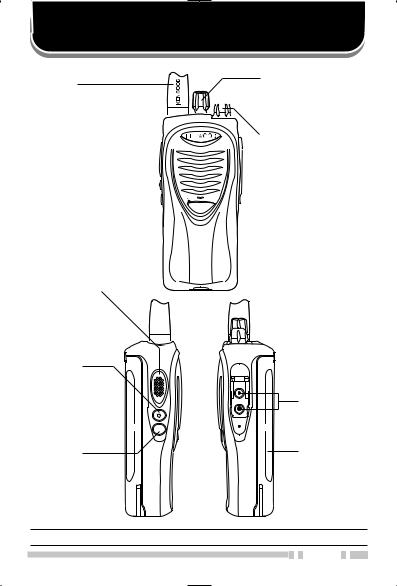
ORIENTATION
Antenna
(optional)
LED indicator 


Indicates the transceiver status. Lights red while transmitting, green while
receiving, and flashes red while the battery power is low while transmitting.
PTT (Push to Talk) switch
Press and hold, then speak into the microphone to transmit.
Lock key
Press and hold to lock the transceiver keys {page 13}.
Scan key
Press to scan the channels for a signal or to remove a channel from scan {page 13}.
Channel selector
Rotate to change the operating channel from 1 ~ 2 or 1 ~ 8.
Power switch/ Volume control
Turn clockwise to switch the power ON and counterclockwise to switch the power OFF. Rotate to adjust the volume.
Speaker/ microphone jacks
Battery pack
(KNB-29N)
Note: The Lock and Scan keys can be reprogrammed {page 25}.
3

PREPARATION
CHARGING THE Ni-MH BATTERY PACK
The initial charging of the battery pack after purchase or extended storage (greater than 2 months) will not bring the battery pack to its normal operating capacity. After repeating the charge/discharge cycle 2 or 3 times, the operating capacity should increase to normal.
Do not recharge the battery pack if it is already fully charged.
Doing so may cause the life of the battery pack to shorten or the battery pack may be damaged.
After recharging the battery pack, disconnect it from the charger. Charging the battery pack for more than 5 days may reduce the battery pack life due to overcharging.
Note:
The ambient temperature should be between 41°F and 104°F (5°C and 40°C) while charging is in progress. Charging outside this range may not fully charge the battery.
Always switch OFF the transceiver equipped with a Ni-MH battery pack before charging. Using the transceiver while charging its battery pack will interfere with correct charging.
The battery pack life is over when its operating time decreases even though it is fully and correctly charged. Replace the battery pack.
4
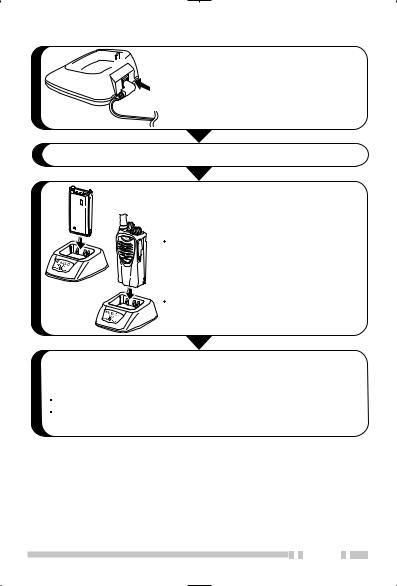
 Plug the AC adaptor cable into the 1
Plug the AC adaptor cable into the 1  adaptor jack located at the rear of
adaptor jack located at the rear of
the charger.
2 Plug the AC adaptor into an AC outlet.
Slide the Ni-MH battery pack or transceiver with a Ni-MH battery pack into the charger.
|
Make sure the battery pack terminals |
|
3 |
are in contact with the charger |
|
terminals by aligning the grooves of |
||
|
||
|
the battery pack with the tabs of the |
|
|
charger. |
|
|
The charger LED lights red and |
|
|
charging begins. |
When charging is completed, the indicator lights green. Remove the battery pack or the transceiver with a battery
4 pack from the charger.
It takes approximately 3 hours to charge the battery pack. When the charger will not be used for a long time, unplug the AC adapter from the AC outlet.
5
